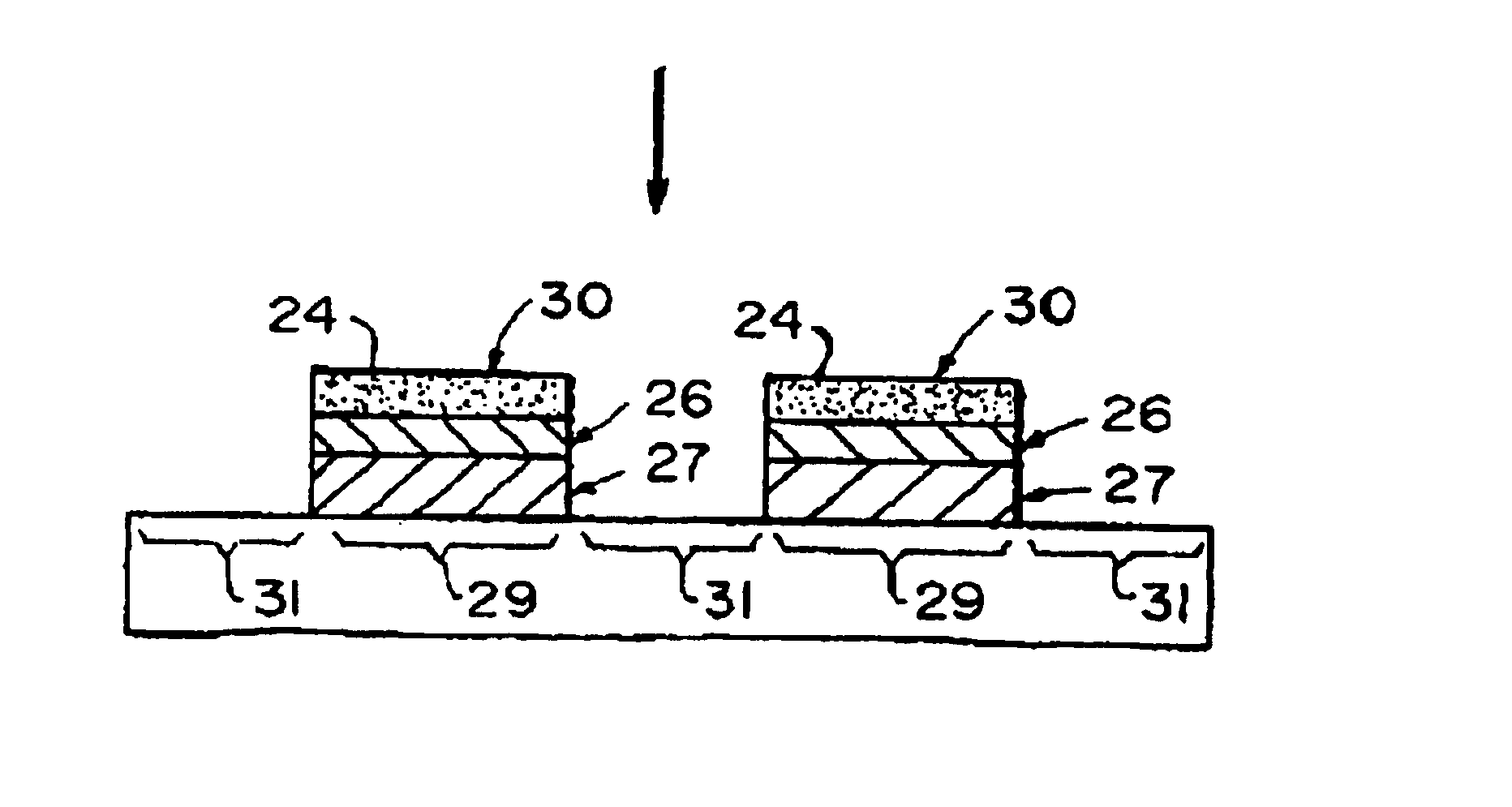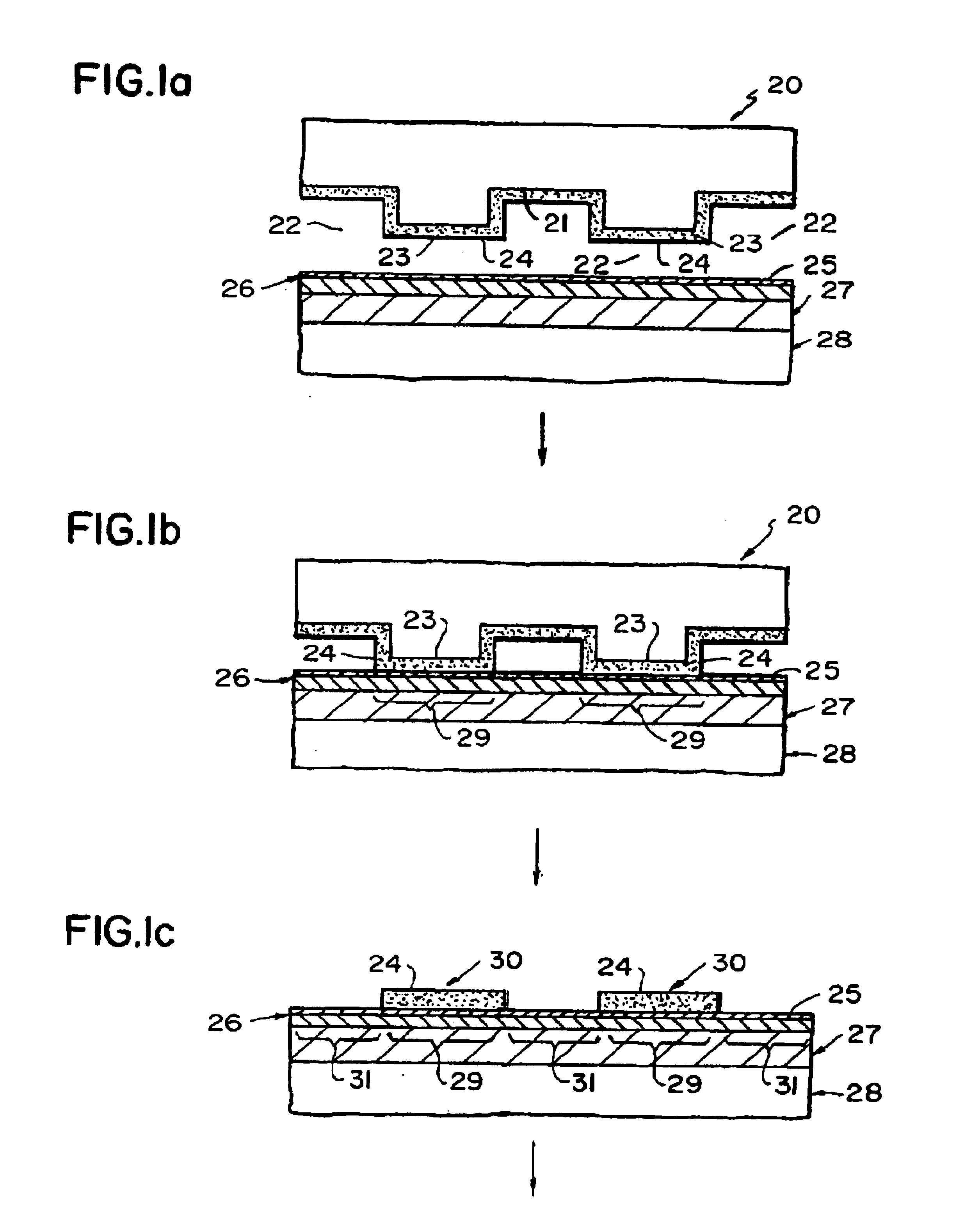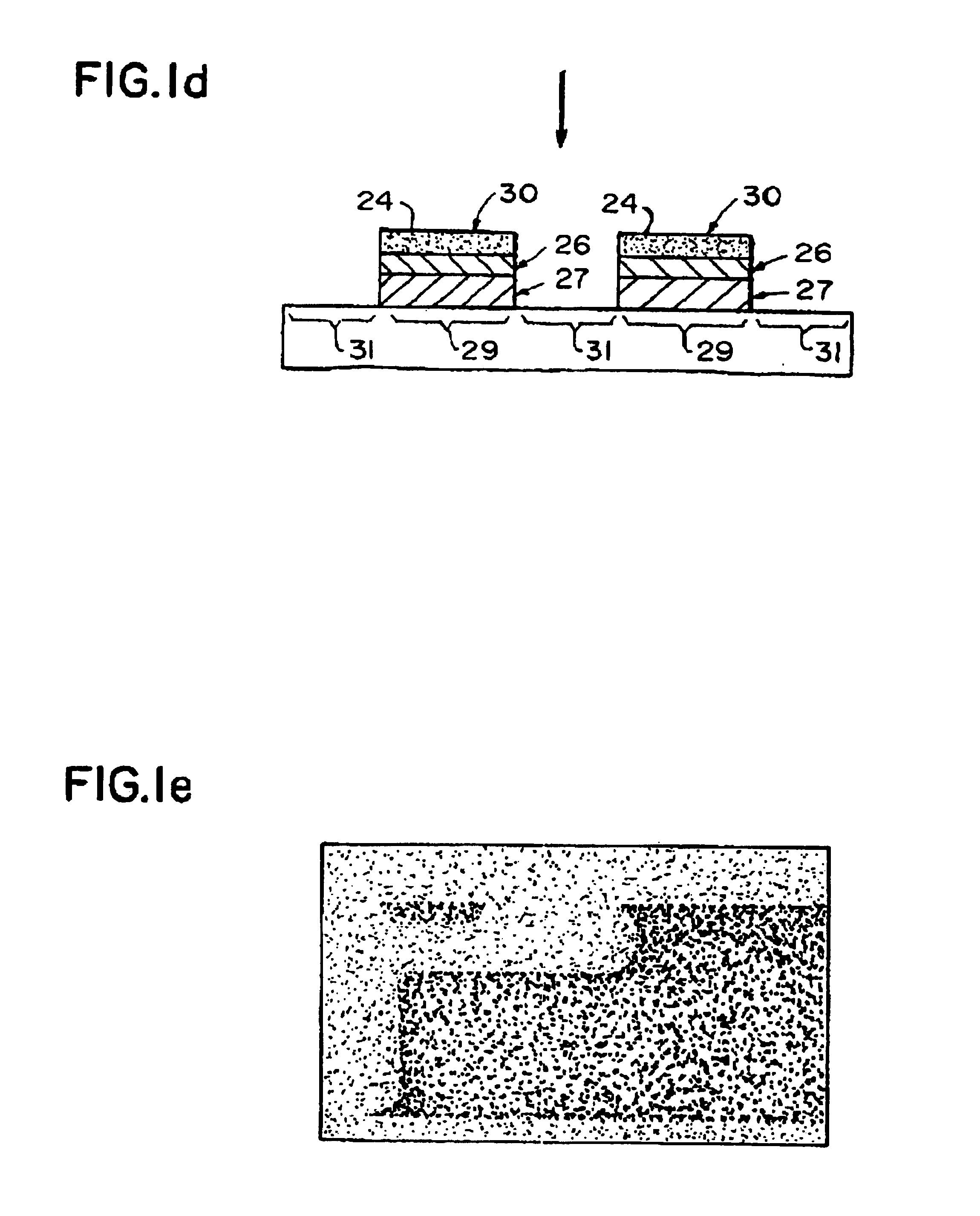Method of forming patterned nickel and doped nickel films via microcontact printing and uses thereof
- Summary
- Abstract
- Description
- Claims
- Application Information
AI Technical Summary
Benefits of technology
Problems solved by technology
Method used
Image
Examples
example 1
Fabrication of a Microcontact Printing Stamp
A template consisting of an exposed and developed photoresist pattern was fabricated by photolithography. A 2-mm-high border was formed by fixing strips of 2-mm-thick adhesive-backed foam around the perimeter of the surface of the template. A 10:1 (w:w or v:v) mixture of PDMS-Sylgard Silicone Elastomer 184 and Sylgard Curing Agent 184 (Dow Corning Corp., Midland, Mich.) was degassed under vacuum for about 10 minutes, then the mixture was poured over the template to approximately the height of the foam border. The PDMS cured at 65° C. for 60 minutes. After cooling to room temperature, the PDMS-stamp was carefully peeled from the template.
example 2
Patterning Boron-Doped Nickel Films by Microcontact Printing and Wet Etching
A stamp fabricated in accordance with Example 1 was fabricated. The surface was coated with octadecylphosphonic acid in ethanol by applying a small volume of solution to cover the surface of the stamp. After allowing the solution to contact the surface of the stamp for 30s, the stamp surface was dried under a stream of dry dinitrogen. The stamp was applied to the native nickel oxide surface of a boron-doped nickel film and removed, whereby a pattern of alkanephosphonic acid is formed. The remaining unprotected native nickel oxide layer and boron-doped nickel film was removed from the surface of the silicon substrate using an aqueous hydrochloric acid (8.0 mM) and hydrogen peroxide (0.6% v:v) solution, thus transferring the pattern of the stamp to the native nickel oxide layer and boron-doped nickel film. An optical micrograph of the resultant pattern is shown in FIG. 2a and a scanning electron micrograph in ...
PUM
| Property | Measurement | Unit |
|---|---|---|
| Thickness | aaaaa | aaaaa |
| Thickness | aaaaa | aaaaa |
| Molar density | aaaaa | aaaaa |
Abstract
Description
Claims
Application Information
 Login to View More
Login to View More - R&D
- Intellectual Property
- Life Sciences
- Materials
- Tech Scout
- Unparalleled Data Quality
- Higher Quality Content
- 60% Fewer Hallucinations
Browse by: Latest US Patents, China's latest patents, Technical Efficacy Thesaurus, Application Domain, Technology Topic, Popular Technical Reports.
© 2025 PatSnap. All rights reserved.Legal|Privacy policy|Modern Slavery Act Transparency Statement|Sitemap|About US| Contact US: help@patsnap.com



